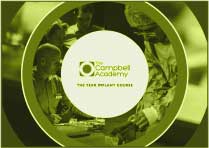One of the areas of real fascination in my implant practice is the provision of anterior implant restorations.
I have been fascinated with this since the ITI Treatment Guide Volume 1 was published in 2006 and we started using provisional crowns in the practice to get better results but I have always placed implants as type 2 (delayed immediate) in anterior sites. I have provided guided bone regeneration (GBR) for the majority of cases here for stability in anterior cases.
Make no mistake, I am a total disciple of the University of Bern and the way this has been carried out by the ITI but I do think that I have the ability to look wider to see what other people are doing.
I have had the privilege over recent months to work with Beatriz Sanchez in the practice, one of our young dentists and aspiring implant surgeons who is just completing the third year of her MSc and is a truly exceptional individual. Beatriz is investigating aesthetic implant restorations in a systematic review as part of her MSc and we were looking recently at a systematic review of aesthetic outcomes in immediate implant restorations provided in 2014. It’s clear that nobody has produced any long term data related to this and that is not the case for the University of Bern’s type 2 method of providing aesthetic stability in implant restorations.
Basically what I think that means is that it’s fine to continue to proceed with immediate implant restorations in the anterior maxilla but very carefully log your aesthetic outcomes over a long period and then report them back whether they’re good or bad. This is the problem, nobody is reporting in the long term. The systematic review itself could find no more data than a year in any study to demonstrate aesthetic outcomes and that’s not long enough, the problems occur at 2 and 3 years.
If we’re genuinely concerned with long term quality we should pay close attention to this and have an open and honest discussion about it; it’s not enough to say “that works in my practice”. The only prospective long term study in the stability of aesthetic outcomes is a 20 patient study at the University of Bern (not a lot of patients I appreciate that).
For this reason we replicated this study at the practice and are now almost 2 years into our 20 patient cohort and getting ready to try and put together a report on the results. I am concerned again that immediate anterior aesthetic restorations are the province of the exceptional clinician. I am also concerned that people are just burying, either deliberately or unconsciously, issues that they have in aesthetics in the long term.
Note: in 2009 Stephen Chen provided a review of 85 immediate anterior implant restorations that he had provided over the previous 10 years. He was unhappy with the results and the amount of recession that occurred over that time and changed his practice entirely to type 2. How many of us would have the dignity and integrity to do that?







Leave a comment